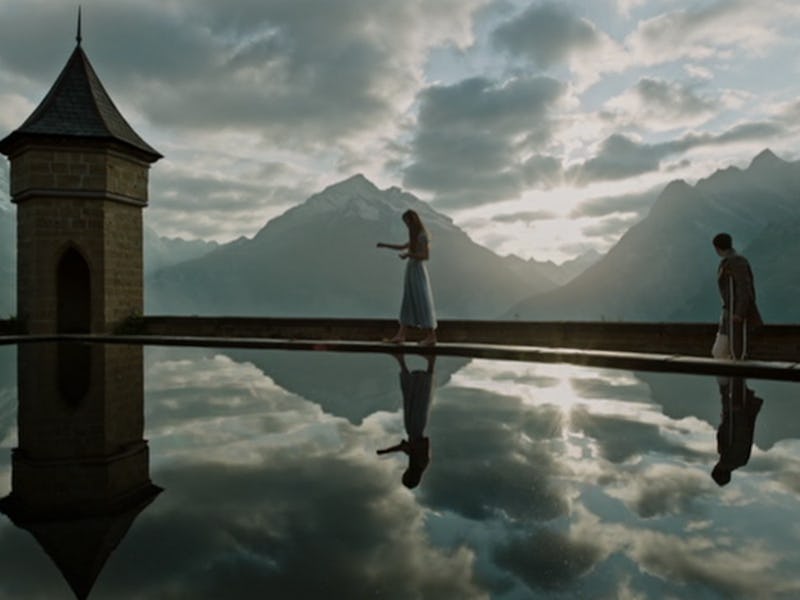5 years ago, Gore Verbinski risked it all to make this underrated Gothic masterpiece
If Verbinski ended his career with the ornate, mesmerizing A Cure for Wellness, it would a remarkable exit.

The Hollywood concept of “one for them, one for me” has been around for decades, referring to the practice of filmmakers alternating between mainstream crowd-pleasing movies and more challenging, personal fare. Each time a promising new filmmaker signs on to a big Hollywood franchise, there’s always the hope that they’ll use the opportunity as a springboard to more daring artistic projects, although that’s become disappointingly rare.
Part of the reason for that is the box office failure of movies like Gore Verbinski’s 2017 Gothic freak-out A Cure for Wellness, possibly the greatest “one for me” movie of the past decade, especially coming from such a mainstream filmmaker. Verbinski began his career working in music videos and commercials rather than indie films, and his debut feature was the family-friendly comedy Mouse Hunt; not exactly an arthouse release. He hit further commercial heights with his 2002 remake of The Ring, and entered the Hollywood stratosphere with his Pirates of the Caribbean trilogy for Disney.
Not even the spectacular failure of his big-budget version of The Lone Ranger could tank Verbinski’s career as a director. Instead it’s the bizarre, fascinating A Cure for Wellness that seems to have put Verbinski in “director jail.” He hasn’t directed another movie since, although he has potential projects in the works. But if Verbinski went out on this film, it would be a glorious finale, the kind of movie that’s just waiting for a cult following and reassessment by cinephiles.
Verbinski was always a technical genius, even if he used those skills in service of movies that were more like theme park rides than cinema. In A Cure for Wellness he brings in influences ranging from Alfred Hitchcock to Hammer Productions to Italian giallo movies, as well as more recent figures like Martin Scorsese and Guillermo del Toro. It’s easy to spot the ways Verbinski has borrowed from the masters, but A Cure for Wellness is also distinctively his own, only the second of his features on which he receives a writing credit.
Lockhart is sent to retrieve CEO Roland Pembroke, who’s gone AWOL.
Dane DeHaan stars as Lockhart, a wolf of Wall Street on the boardroom fast-track at his generic financial services company. He’s the kind of guy who constantly chews Nicorette gum and has to have his secretary remind him of his mother’s birthday, so he’s obviously due for some comeuppance. With the company on the cusp of a major merger, Lockhart is sent to retrieve CEO Roland Pembroke (Harry Groener), who’s gone AWOL on what was supposed to be a short spa vacation in Switzerland. Securing Pembroke’s signature is essential for the merger and Lockhart’s future at the company.
Anyone who’s watched a horror movie knows that Lockhart is in for a rough time at the remote wellness center, even before his mother ominously predicts that he’ll never return. When he arrives in front of the institute after a trip along a twisty mountain road, he tells his driver that he’ll be out in “20 minutes, max,” and he demands to see Pembroke immediately.
Lockhart is immersed in a massive sensory-deprivation tank.
Things don’t exactly go as planned, and after Lockhart is refused access to Pembroke he heads back down the mountain, only to be caught in a car accident when a deer darts into the road. The visceral intensity of the accident recalls the similarly jarring scene in Verbinski’s The Ring when a spooked horse gallops off the edge of a moving ferry. In both cases, the animal’s grisly demise foretells danger for the film’s protagonist.
Laid up with a broken leg, Lockhart finds himself confined to the institute. His interactions with Pembroke are brief and confounding, and lack any progress on getting either of them back to New York City. Lockhart meets an ethereal young woman named Hannah (Mia Goth) who tells him “no one ever leaves,” and indeed everyone else he meets seems to be elated with the care of the center’s director, Dr. Heinreich Volmer (Jason Isaacs). The patients are almost all of retirement age, successful executives like Pembroke whose souls have been corrupted by predatory capitalism.
Eels are the aquatic animals of choice for Dr. Volmer’s “treatments.”
Lockhart suffers from that same existential ailment, but Dr. Volmer is not a healer, and the institute has a sinister history going back centuries. Lockhart’s driver tells him a story about a baron who previously owned the estate, and who used it to conduct twisted medical experiments on the local peasants. They eventually burned both the baron and his wife alive, and the image of torch-wielding peasants coming for a mad scientist evokes various versions of the Frankenstein story. Isaacs channels a bit of famous Doctor Frankensteins like Colin Clive and Peter Cushing in his portrayal of Volmer, who hides an even more demented secret beyond his mad science.
With a running time of 146 minutes, A Cure for Wellness has the chance to cycle through various genres, building a story that becomes more byzantine as it goes along. The movie is sprawling but never unstable, with Verbinski and cinematographer Bojan Bazelli delivering a steady stream of gorgeous, striking images, from Lockhart immersed in a massive sensory-deprivation tank to Hannah in a bathtub full of writhing eels, the aquatic animals of choice for Dr. Volmer’s “treatments.”
It’s a luxuriously unsettling experience, much like staying at the spa itself, and viewers, like Lockhart, may find themselves surrendering to its horrors. “It’s just the toxins leaving the body,” Dr. Volmer tells Lockhart after a particularly harrowing experience with the treatment, and that’s an apt metaphor for Verbinski purging his Hollywood instincts with this journey into beautiful madness.